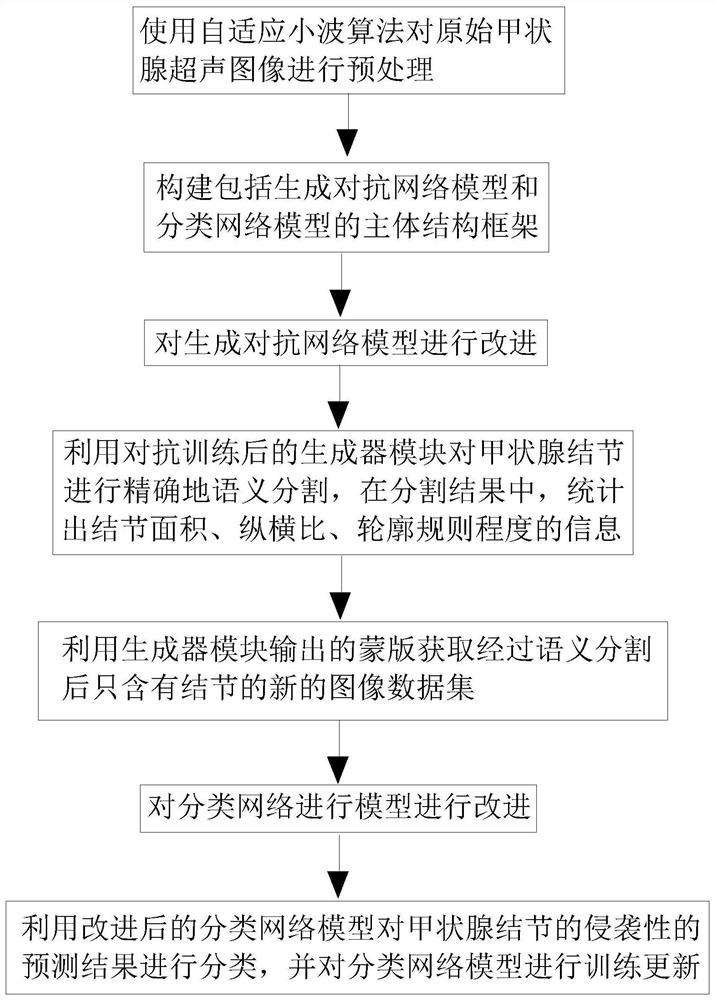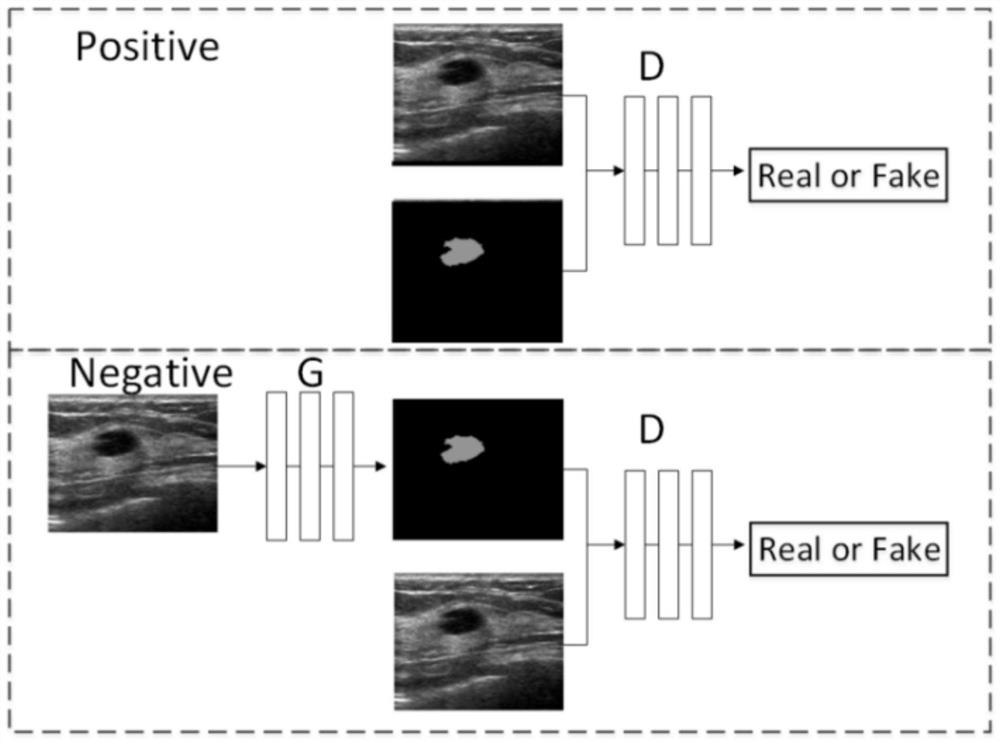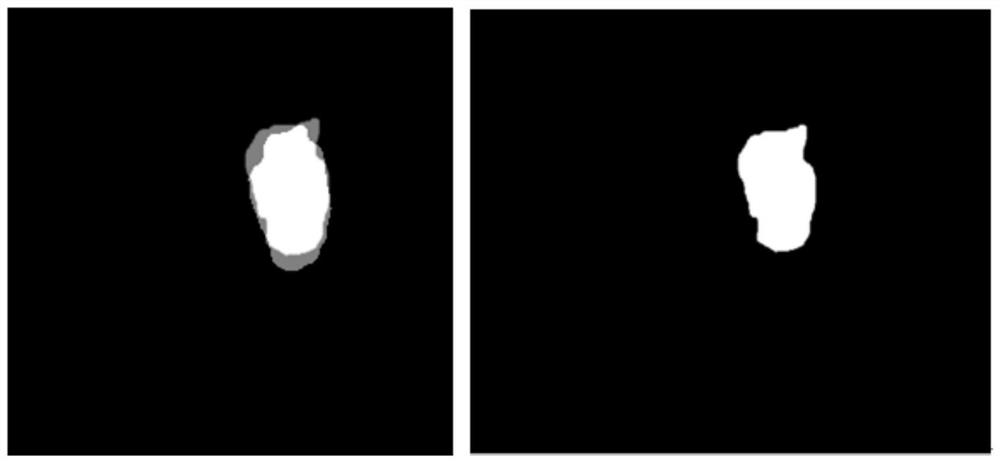A method for predicting the aggressiveness of thyroid nodules based on deep learning segmentation network
A thyroid nodule and deep learning technology, applied in the field of image processing, can solve the problems of insufficient accuracy and low detection rate, and achieve the effects of improving accuracy, increasing detection speed, and overcoming poor image quality
- Summary
- Abstract
- Description
- Claims
- Application Information
AI Technical Summary
Problems solved by technology
Method used
Image
Examples
Embodiment 1
[0073] This embodiment provides a method for predicting the aggressiveness of thyroid nodules based on a deep learning segmentation network, such as figure 1 As shown, the method includes the following steps:
[0074] S1: The adaptive wavelet algorithm is used to preprocess the clinically obtained thyroid ultrasound images, remove image noise and retain the edge information of the images in the high-frequency domain, and obtain the original data set.
[0075] Aiming at the problems of poor image quality, severe speckle noise, fuzzy edges of nodules, discontinuous boundaries, low contrast, and concentrated edge information and severe noise in the high-frequency domain. In this embodiment, an adaptive wavelet algorithm is used to preprocess the image. Wavelet filtering is based on the wavelet change, transforming the signal in the spatial domain to the wavelet domain with time-frequency characteristics, and then using the wavelet coefficients mapped by the threshold to reduce n...
Embodiment 2
[0125] like Figure 10 As shown, this embodiment provides a thyroid nodule invasiveness prediction system based on a deep learning segmentation network. To predict the conclusion of nodule invasiveness, the system includes:
[0126] A preprocessing module, which is used for preprocessing the clinically obtained thyroid ultrasound image according to the method in embodiment 1, removing image noise and retaining edge information of the image in the high frequency domain;
[0127]Generate an adversarial network module, which includes a generator submodule and a discriminator submodule; the generated adversarial network module uses the method in Embodiment 1 to carry out semantic segmentation of nodule instances on thyroid ultrasound images, obtains nodule masks, and then extracts Output the nodule area information, edge information and aspect ratio information; and binarize the mask output by the generator module, and then multiply it with the original image to obtain the image ...
Embodiment 3
[0130] This embodiment provides a terminal for predicting the aggressiveness of thyroid nodules based on a deep learning segmentation network. The terminal includes a memory, a processor, and a computer program stored in the memory and operable on the processor. The processor The method for predicting the aggressiveness of thyroid nodules based on the deep learning segmentation network as in Example 1 was implemented.
PUM
 Login to View More
Login to View More Abstract
Description
Claims
Application Information
 Login to View More
Login to View More - R&D
- Intellectual Property
- Life Sciences
- Materials
- Tech Scout
- Unparalleled Data Quality
- Higher Quality Content
- 60% Fewer Hallucinations
Browse by: Latest US Patents, China's latest patents, Technical Efficacy Thesaurus, Application Domain, Technology Topic, Popular Technical Reports.
© 2025 PatSnap. All rights reserved.Legal|Privacy policy|Modern Slavery Act Transparency Statement|Sitemap|About US| Contact US: help@patsnap.com



